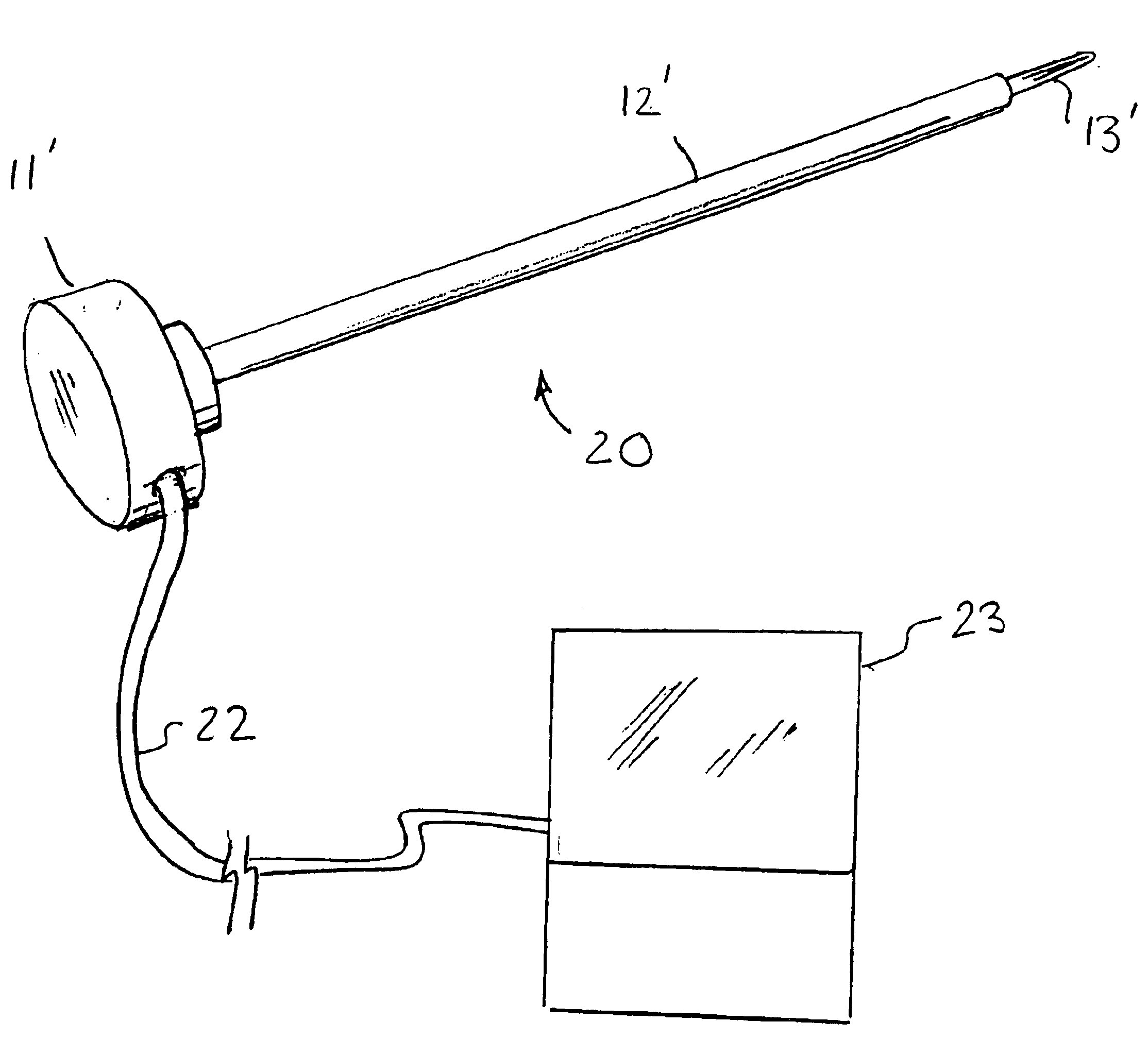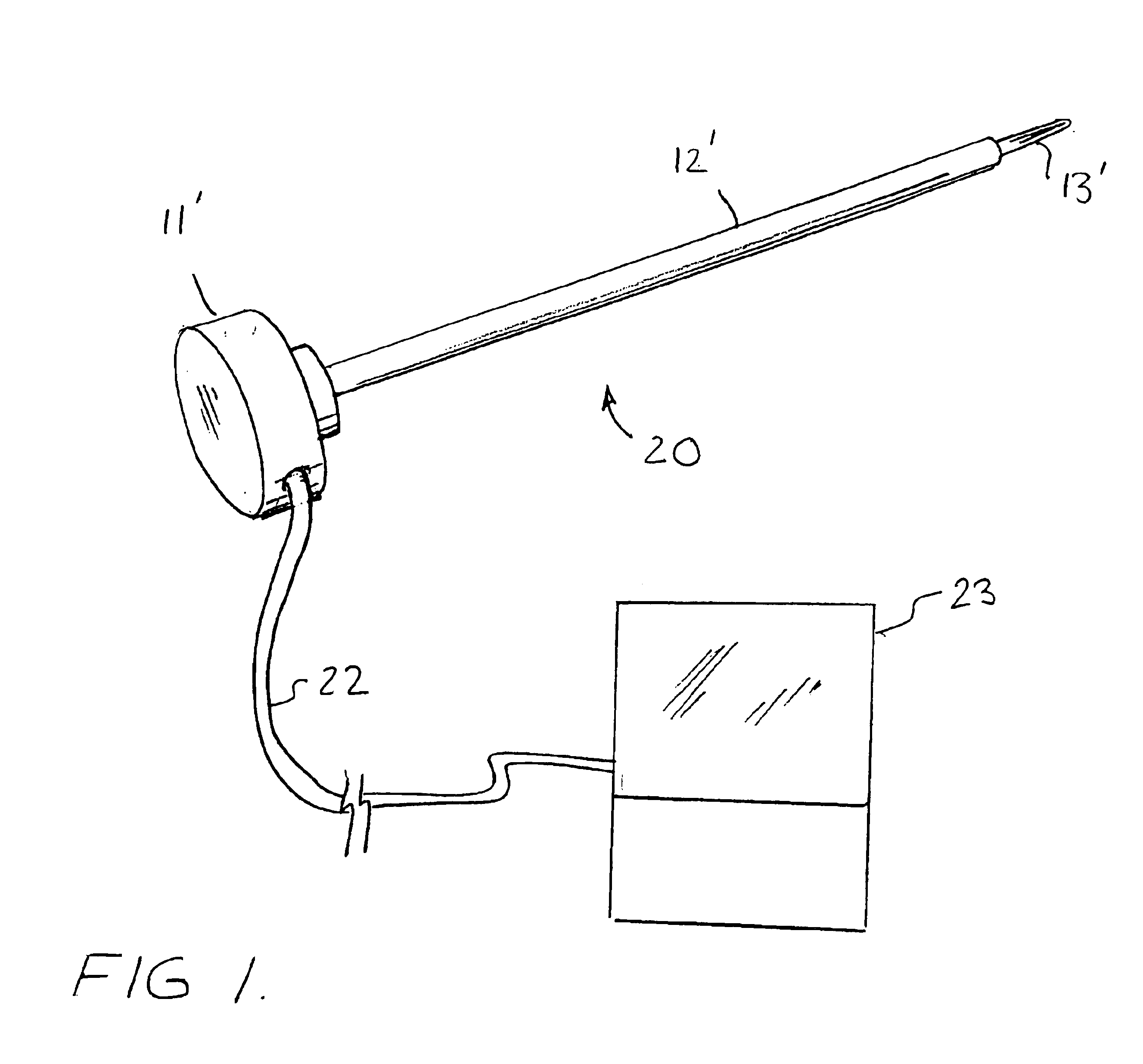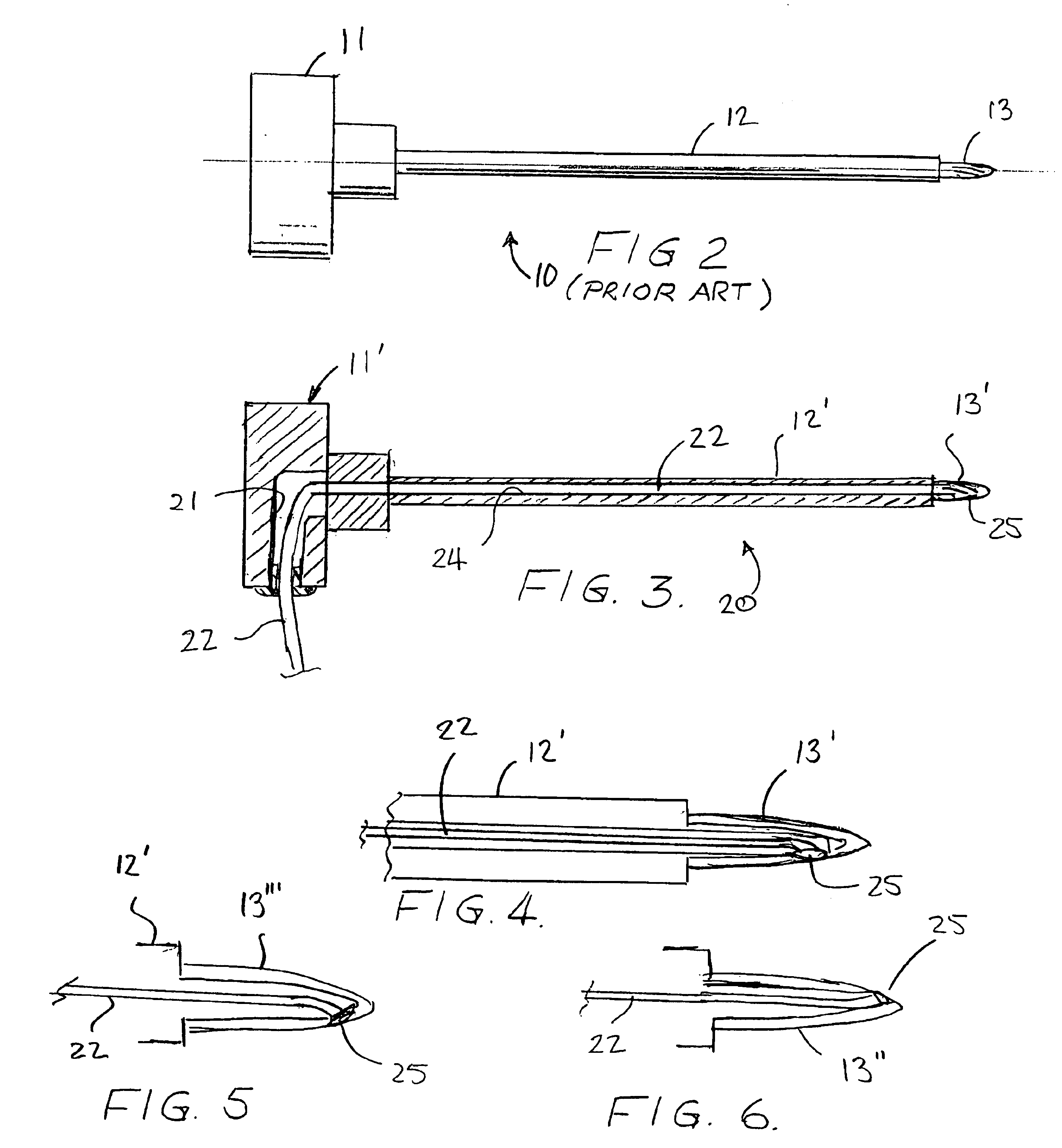Endoscopic pedicle probe
a pedicle probe and endoscope technology, applied in the field of surgical instruments, can solve the problems of indirect and accurate determination dural or neural injury, etc., and achieve the effect of avoiding parallax, direct and accurate determination, and no additional costs or equipmen
- Summary
- Abstract
- Description
- Claims
- Application Information
AI Technical Summary
Benefits of technology
Problems solved by technology
Method used
Image
Examples
Embodiment Construction
Referring more specifically to the drawings, a conventional Fox pedicle probe is depicted at 10 in FIG. 2. The probe has a disc-shaped proximal end 11 that is about two inches in diameter, and a solid metal shaft 12 projecting from the center of one side thereof. A tip end 13 configured to act as a reamer, i.e., with a fluted configuration as found on drill bits, is on the distal end of the shaft. In use, a surgeon places the disc-shaped proximal end 11 in the palm of his or her hand, with the shaft extending forwardly. The tip end is then pushed against the pedicle while being rotated back and forth about the longitudinal axis of the shaft to form a hole in the pedicle for reception of a pedicle screw. See, for example, FIGS. 9-13.
In the specific embodiment illustrated and described herein, the pedicle probe 20 of the invention, as shown in FIGS. 1 and 3-13, is based on the Fox pedicle probe of FIG. 2. However, it should be understood that the probe 20 could be based on other comme...
PUM
 Login to View More
Login to View More Abstract
Description
Claims
Application Information
 Login to View More
Login to View More - R&D
- Intellectual Property
- Life Sciences
- Materials
- Tech Scout
- Unparalleled Data Quality
- Higher Quality Content
- 60% Fewer Hallucinations
Browse by: Latest US Patents, China's latest patents, Technical Efficacy Thesaurus, Application Domain, Technology Topic, Popular Technical Reports.
© 2025 PatSnap. All rights reserved.Legal|Privacy policy|Modern Slavery Act Transparency Statement|Sitemap|About US| Contact US: help@patsnap.com



